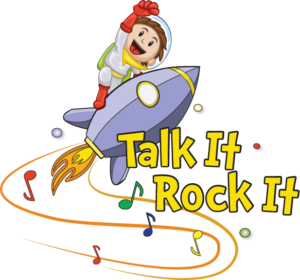
Before I discuss using music as a powerful tool in speech therapy, I need to differentiate between a speech therapist and a music therapist. I am a speech language pathologist (SLP and some say speech therapist) and not a music therapist. SLPs help people with communication problems. SLPs use many techniques, therapy tools, and supports, but our primary goal is to facilitate communication. A music therapist uses only music as a tool to support and improve physical, emotional, cognitive, and social needs of individuals.
I write this article through the eyes of an SLP and not a music therapist. I don’t look at a song the way a music therapist probably does. I look at a song specifically for the speech and language techniques within the song and how it can be used to help communication.
Does music help in speech therapy?
It certainly does, but unfortunately, not every SLP utilizes music as I would hope. When working with children with speech and language disorders or delays, there is simply not enough time to consistently use music in a session. As a result, I often teach parents to use a song for home practice. Songs during daily routines were some of the best ways to carry-over goals emphasized during our home visits.
When working with preschoolers, using a song was great for introducing new vocabulary, increasing attention and engagement, establishing gross motor and verbal imitation, and following directions. A song helped children engage with each other. Songs helped children learn a skill such as answering questions, making that skill easier to carry over into functional use. Sometimes, a song helped children understand the steps and directions involved in a routine such as putting on a coat and boots.
What techniques do music therapists use and does music therapy improve communication?
Because I am not a music therapist, I cannot answer what techniques a music therapist uses. But I can certainly answer this question based on how I use speech and language techniques within the songs I write and use in speech therapy sessions. Here are some of the techniques and beliefs I have in using music in speech and language therapy.
Emotional engagement.
When kids love something, they repeat it often, making learning more efficient. Kids LOVE songs and LOVE to hear them repeatedly.
Repetition within a song.
For every song I write, I think about repetition. For example, my Bye song repeats the word, bye, 73 times. Repeating a word or phrase can be easily incorporated in a song.
Slower pace.
Songs often go too rapidly. The pace of a song needs to be slower for young children and especially kids who have a speech and language disorder.
Specific speech and language goals within a song.
With every song, consider the goal. For one song, I may emphasize final consonants as in my song, Put the Sound on the End. For another, I may focus on vocabulary for a routine like going to the park as in the song, Slide. With every song, think about how it can improve social skills, following directions, two word phrase productions, and more. Our songs specifically target all of those skills.
Virtually every song I have written was based on a need that one of my students had. I challenge you to look at every song based on how it can teach your child or students. Go to my song set page here to look at the song names and general goals of each song. Our songs are unique because of how and why they were written – to enhance the speech and language of each child.


